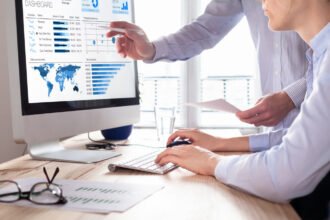About ten years ago, the notion of crowdsourcing gained wide currency in the corporate world. The premise behind the idea is simple: organizations can gain a great deal from the ideas and energies of people outside the corridors of power, including from ordinary employees to partners and consumers.
About ten years ago, the notion of crowdsourcing gained wide currency in the corporate world. The premise behind the idea is simple: organizations can gain a great deal from the ideas and energies of people outside the corridors of power, including from ordinary employees to partners and consumers.
The notion that good ideas come from the shop floor and other metaphorical places where most of the actual work is done was not a new one. But recently, for the first time, networking and internet technologies have made it possible to crowdsource at scale in record time. Hundreds of companies and hundreds of thousands of initiatives sprung forth from the well of funding for crowdsourcing; these companies revealed in their mission to democratize and level the playing field of ideas.
No doubt, this trend created some interesting results. Examples of crowdsourced innovations and quick-fixes-gone-big are, if not substantial, certainly numerous. The psychological benefit for those being asked for their ideas for the first time is often underestimated as well. Almost no business leader would say in public that he or his coterie of top leaders are the only sources of ideas that move the organization forward. This democratization of idea generation—more philosophical than practical in my view—was a rhetorical victory for those who truly tried to incorporate many voices into the idea-innovation engine. However, for a variety of reasons, idea crowdsourcing has fallen short.
But this doesn’t have to be the case. With the right will and the technology available to help, real steps towards this democratization can take place.
So where is the slip? How do we think about the gap between the powerful rhetoric of crowdsourcing and its reality?
Why crowdsourcing falls short of democracy
While crowdsourcing is typically about the gathering of ideas, in my view, the ability to act rather than the ability to think is the crux of the matter. Great ideas indeed come from every quarter, but the same culture and technology framework still determines what we do with these ideas and in what ways we act on these ideas. The matter, ultimately, is one of politics plus data.
Politics
The politics part is easy to understand. If the same people who presided over the levers of power in a pre-crowdsourcing world preside over the levers of investment in a crowdsourcing world, then we can bet that the organization will subject all ideas to the same engine of mediocrity that defined the organization before. If you give a gambler differently colored chips, she will still gamble them away. And if you give a hoarder more money to invest, he’ll likely just keep it in the bank versus deploying it in the market. Too many organizations still run in the command and control manner in which too few people can see ideas through from data to decision.
Technology
The technology part is slight more complicated. Because in a large, complex organization, even if there is political will to democratize, the process by which you democratize in a sustainable fashion is guided by the availability and application of the right technology. If we take the data-to-decision continuum seriously, then we must be able to easily make the right data available in full form to all parties and roles who might be able to use it to make positive change and innovate. Making this data available not just once but in a continual and persistent manner is fundamental to the quest for democratization.
Democratized data access is the key to effective crowdsourcing
In order to do so, organizations must think of their data infrastructure as key to the ability to tap into the wonderful and bountiful energies of all employees, partners, and associates. This data infrastructure must at once accommodate the access needs at scale for all users that can benefit, but it must also live up to the highest standards of security and governance.
Eckerson report: A reference architecture for self-service analytics
Despite positive strides, ten years into the era of crowdsourcing, we still haven’t made the progress we needed to. However, we can decide to make the politics work and, here and now, in 2017, we have the technology to provide democratized data access in order to enable effective corporate crowdsourcing.
So the choice to crowdsource effectively is ours to make. I challenge us all to make it.







